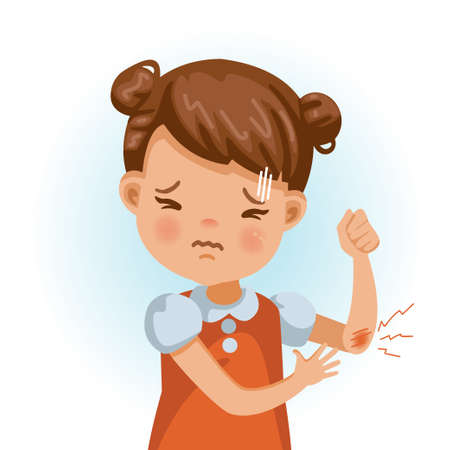1. Understanding Toddler Behavior
Toddlers are in a fascinating stage of development, full of curiosity, emotions, and growing independence. However, this stage also comes with frequent meltdowns and emotional outbursts. Understanding why toddlers behave this way can help parents redirect their actions and prevent tantrums before they start.
Why Do Toddlers Have Meltdowns?
Toddlers experience meltdowns because they are still learning how to manage their emotions, communicate effectively, and navigate their world. Here are some key reasons why meltdowns happen:
| Reason | Description |
|---|---|
| Limited Communication Skills | Toddlers may not have the vocabulary to express their needs or frustrations, leading to emotional outbursts. |
| Big Emotions | They feel emotions intensely but don’t yet know how to regulate them. |
| Desire for Independence | Toddlers want to do things on their own but often lack the skills or ability, which can lead to frustration. |
| Sensory Overload | Noisy or overstimulating environments can overwhelm them, triggering meltdowns. |
| Lack of Routine | An unpredictable schedule can make toddlers feel insecure and more prone to tantrums. |
The Impact of Developmental Stages on Behavior
Toddlerhood is a time of rapid growth in multiple areas. Their cognitive, emotional, and social skills are developing simultaneously, which affects how they respond to situations.
Cognitive Development
Toddlers are learning cause and effect, problem-solving, and basic reasoning skills. However, they dont yet understand patience or delayed gratification.
Emotional Development
Their brains are still developing self-regulation skills. This means they feel emotions strongly but struggle with calming themselves down.
Social Development
Toddlers are beginning to assert independence while also seeking comfort from caregivers. They may test boundaries as part of understanding relationships.
The Role of Parents in Managing Toddler Behavior
A parent’s response plays a huge role in how toddlers handle their emotions. Instead of reacting with frustration, parents can guide toddlers by using redirection techniques that acknowledge their feelings while steering them toward a more appropriate behavior.
2. Recognizing Early Signs of a Meltdown
One of the best ways to prevent a toddler meltdown is by recognizing the early warning signs before emotions spiral out of control. Toddlers often give subtle cues that they are feeling overwhelmed, frustrated, or overstimulated. By identifying these signs early, you can redirect their behavior and help them manage their emotions more effectively.
Common Triggers for Toddler Meltdowns
Understanding what typically causes tantrums can help you anticipate and prevent them. While every child is different, some common triggers include:
| Trigger | Description |
|---|---|
| Hunger | Toddlers may become irritable when they need food but don’t recognize their own hunger cues. |
| Tiredness | A lack of sleep or skipped naps can make emotional regulation much harder. |
| Overstimulation | Loud noises, bright lights, or too many activities can overwhelm a toddler. |
| Frustration | Difficult tasks or communication struggles can lead to frustration and eventual meltdowns. |
| Lack of Control | Toddlers crave independence, and feeling powerless can trigger an emotional reaction. |
Recognizing Early Warning Signs
Toddlers rarely go from calm to full-blown tantrum instantly. They often exhibit warning signs through body language, tone shifts, and frustration cues. Here are some common indicators that a meltdown may be coming:
- Tense Body Language: Clenched fists, stiff posture, or sudden restlessness.
- Tone Changes: Whining, louder speech, or repeating the same phrase with frustration.
- Avoidance Behavior: Turning away, covering ears, or refusing to engage.
- Irritability: Increased fussiness, snapping at small things, or becoming overly sensitive.
- Anxious Movements: Pacing, pulling on clothes, or rubbing eyes excessively.
The Importance of Early Intervention
If you notice any of these signs, acting quickly can make all the difference. Offer choices to give your child a sense of control, change the environment if they are overstimulated, or provide comfort through calm words and gentle reassurance. Redirecting their focus before frustration escalates can help prevent a full meltdown and teach them healthy coping strategies over time.

3. Effective Redirection Strategies
When your toddler is on the verge of a meltdown, using redirection techniques can help shift their focus and prevent frustration from escalating. Here are some simple yet effective ways to gently guide their attention in a different direction.
Use Distraction
Distraction is one of the easiest ways to redirect a toddlers behavior. If they are fixated on something that might lead to frustration, quickly introduce something new and interesting.
| Situation | Distraction Technique |
|---|---|
| Your toddler wants a toy another child is using. | Show them a different toy or start an engaging activity nearby. |
| Your child insists on touching something unsafe. | Point out something fascinating in the environment, like a bird or a colorful object. |
Offer Choices
Toddlers love feeling in control, so giving them choices helps redirect their attention while still making them feel empowered.
- If they refuse to put on their shoes, ask, “Do you want to wear the blue shoes or the red ones?”
- If they don’t want to leave the park, ask, “Do you want to walk to the car like a big kid or hop like a bunny?”
Engage Them in Something New
If your child is getting frustrated, shifting their focus with an exciting new activity can help prevent a meltdown. Try:
- Singing a silly song together.
- Asking them to help with a simple task like holding something for you.
- Telling them a quick story or asking about their favorite character.
The Key to Successful Redirection
The trick is to act quickly before frustration builds up. Keep your tone light and positive, and make sure your alternative option is genuinely engaging. With practice, these strategies will become second nature and help create smoother interactions with your toddler every day.
4. Encouraging Positive Behavior
Toddlers are constantly learning how to navigate the world around them. By reinforcing positive behavior through praise, routines, and consistency, you can help your child develop good habits and reduce meltdowns. Setting clear expectations and modeling appropriate responses also play a key role in guiding their behavior.
Reinforce Good Behavior with Praise
Praise is a powerful tool for encouraging toddlers to repeat positive behaviors. When your child does something well, acknowledge it right away. Be specific about what they did correctly so they understand what behavior to continue.
Examples of Effective Praise
| Generic Praise | Effective Praise |
|---|---|
| “Good job!” | “Great job sharing your toys with your friend!” |
| “Youre so smart!” | “You worked hard on that puzzle, and you figured it out!” |
| “Nice work!” | “Thank you for using your inside voice at the store!” |
Create Predictable Routines
Toddlers thrive on routine because it helps them feel secure. When they know what to expect, they are less likely to become frustrated or overwhelmed. Establishing consistent daily routines for meals, naps, playtime, and bedtime can prevent many behavioral issues.
Simple Daily Routine Example
| Time | Activity |
|---|---|
| 7:30 AM | Wake up & morning routine (brush teeth, get dressed) |
| 8:00 AM | Breakfast |
| 9:00 AM | Playtime or outing |
| 12:00 PM | Lunchtime |
| 1:00 PM | Naptime |
| 3:00 PM | Afternoon snack & quiet activities |
| 5:30 PM | Dinner with family |
| 7:00 PM | Bath time & bedtime routine (storytime, cuddles) |
| 8:00 PM | Lights out & sleep |
Be Consistent with Expectations
Toddlers need clear and consistent expectations to understand boundaries. If rules change frequently or consequences vary, they may become confused and frustrated. Decide on simple rules and stick to them.
Toddler-Friendly Rules & Expectations
- “We use gentle hands with friends.”
- “We sit while eating.”
- “Toys go back in the bin after playtime.”
- “Inside voices when we’re indoors.”
- “Hold hands when crossing the street.”
Model Appropriate Responses
Toddlers learn by observing adults. If you stay calm during frustrating moments, they will be more likely to do the same. Show them how to express emotions appropriately by using words like “Im feeling frustrated” instead of reacting negatively.
Tips for Modeling Behavior:
- Acknowledge feelings: “I see youre upset because its time to leave the park.”
- Breathe together: “Let’s take a deep breath before we talk about this.”
- Solve problems together: “What can we do if we both want the same toy?”
- Avoid yelling: Speak calmly even in difficult situations.
- Praise efforts to self-regulate: “I love how you used your words instead of crying!”
Praising positive actions, maintaining routines, setting clear expectations, and modeling good behavior all work together to encourage better toddler behavior. With consistency and patience, you can help your child develop emotional regulation skills while preventing meltdowns before they start.
5. Creating a Calm and Supportive Environment
Toddlers thrive in an environment where they feel safe, understood, and supported. A well-structured home and daily routine can help reduce frustration and overstimulation, making meltdowns less likely. By setting up a predictable and soothing atmosphere, you can guide your toddler’s behavior more effectively.
Establish a Predictable Routine
Toddlers feel secure when they know what to expect. A consistent daily routine helps them understand transitions and reduces anxiety. Try to keep meal times, naps, playtime, and bedtime at the same time each day.
| Time of Day | Activity |
|---|---|
| 7:30 AM | Wake-up & Breakfast |
| 9:00 AM | Playtime (Indoor or Outdoor) |
| 11:30 AM | Lunch |
| 12:30 PM | Naptime |
| 3:00 PM | Afternoon Snack & Quiet Activities |
| 6:00 PM | Dinner & Family Time |
| 7:30 PM | Bedtime Routine (Bath, Story, Sleep) |
Create a Calm Home Environment
Your toddler’s surroundings play a big role in their mood and behavior. A peaceful space with minimal distractions can help prevent overstimulation.
Tips for a Calming Space:
- Avoid Clutter: Too many toys and objects can overwhelm toddlers. Keep play areas organized.
- Create Cozy Corners: A reading nook or soft play area can provide a retreat when your child needs a break.
- Soothe with Soft Lighting: Bright lights can be overstimulating. Use warm, dim lighting in the evening.
- Select Gentle Background Sounds: Soft music or white noise can create a relaxing atmosphere.
- Avoid Excessive Screen Time: Too much screen exposure can lead to overstimulation. Encourage hands-on play instead.
Acknowledge Their Feelings & Provide Comfort
Toddlers may not always have the words to express their frustrations. Helping them feel heard and comforted can prevent meltdowns before they escalate.
Phrases to Validate Feelings:
- “I see youre feeling frustrated. Let’s take a deep breath together.”
- “You seem upset. Do you need a hug?”
- “I understand that waiting is hard. Let’s find something fun to do while we wait.”
- “It’s okay to be sad. I’m here for you.”
The Power of Connection & Positive Attention
A child who feels connected is more likely to cooperate. Spend intentional time engaging with your toddler through play, reading, or simply talking about their day.
Ways to Strengthen Your Bond:
- Create Special One-on-One Time: Even 10-15 minutes of undivided attention makes a difference.
- Praise Positive Behavior: Notice and acknowledge good choices (“I love how you shared your toy!”).
- Cuddle & Show Affection: Physical touch reassures toddlers that they are loved.
- Sit at Their Level: Eye contact and being at their height help them feel understood.
A calm and supportive environment fosters emotional security, making it easier for toddlers to navigate challenges without resorting to meltdowns. By creating consistency, reducing overstimulation, and strengthening your bond, you set the stage for smoother days ahead.


